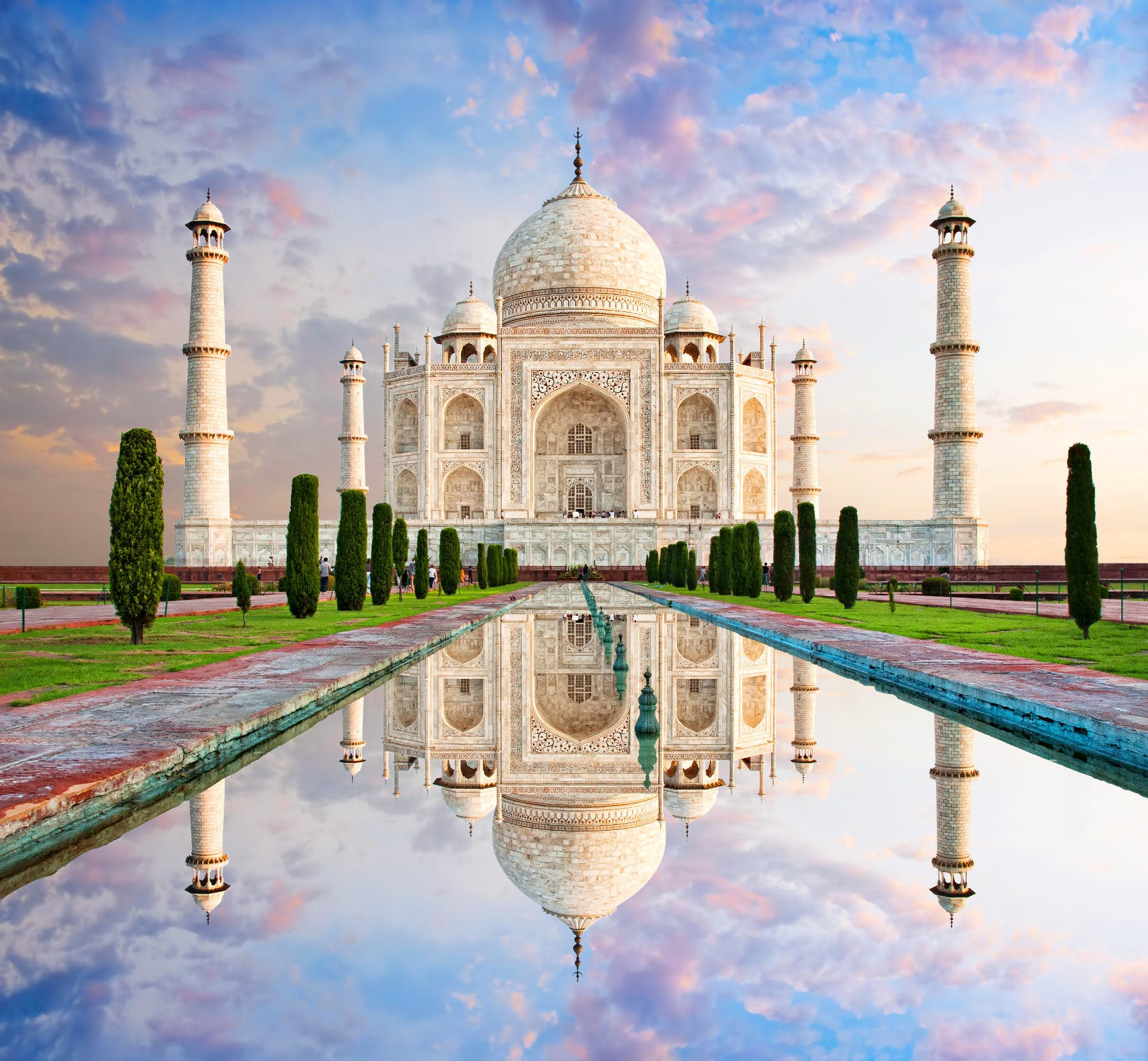- +91 05622510070
- Support@adaagra.org.in
- EDC Login
- Agra Development Authority ADA, Agra , Ratan Muni Rd, Jaipur House Colony, Agra,Uttar Pradesh , 282010
Say Hello, to Agra Development Authority's Mobile App
Welcome to The TAJ MAHAL Mausoleum in Agra, Uttar Pradesh

The Taj Mahal was designated as a UNESCO World Heritage Site in 1983 for being "the jewel of Muslim art in India and one of the universally admired masterpieces of the world's heritage". Described by Nobel laureate Rabindranath Tagore as "the tear-drop on the cheek of time", it is regarded by manyas the best example of Mughal architecture and a symbol of India's rich history. The Taj Mahal attracts 7–8 million visitors a year. In 2007, it was declared a winner of the New 7 Wonders of the World (2000–2007) initiative.
Construction of the mausoleum was essentially completed in 1643 but work continued on other phases of the project for another 10 years. The Taj Mahal complex is believed to have been completed in its entirety in 1653 at a cost estimated at the time to be around 32 million rupees, which in 2015 would be approximately 52.8 billion rupees (US$827 million). The construction project employed some 20,000 artisans under the guidance of a board of architects led by the court architect to the emperor, Ustad Ahmad Lahauri.
Architecture
The 'Taj Mahal' represents the finest and most sophisticated example of Mughal architecture. Its origins lie in the moving circumstances of its commission and the culture and history of an Islamic Mughal empire's rule of large parts of India. The distraught Mughal Emperor Shah Jahan commissioned the mausoleum upon the death of his favorite wife Mumtaz Mahal.
Today it is one of the most famous and recognisable buildings in the world and while the tanish colored enormous building in sight, domed marble mausoleum is the most familiar part of the monument, the Taj Mahal is an extensive complex of buildings and gardens that extends over 22.44 hectares (55.5 acres) and includes subsidiary tombs, waterworks infrastructure, the small town of 'Taj Ganji' to the south and a 'moonlight garden' to the north of the river. Construction began in 1632 AD, (1041 AH), on the south bank of the River Yamuna in Agra, and was substantially complete by 1648 AD (1058 AH). The design was conceived as both an earthly replica of the house of Mumtaz in paradise and an instrument of propaganda for the emperor.

Symbolism
Under the reign of Shah Jahan, the symbolic content of Mughal architecture reached a peak.The Taj Mahal complex was conceived as a replica on earth of the house of the departed in paradise (inspired by a verse by the imperial goldsmith and poet Bibadal Khan. This theme, common in most Mughal funerary architecture, permeates the entire complex and informs the detailed design of all the elements. A number of secondary principles also inform the design, of which hierarchy is the most dominant. A deliberate interplay is established between the building's elements, its surface decoration, materials, geometric planning and its acoustics. This interplay extends from what can be experienced directly with the senses, into religious, intellectual, mathematical and poetic ideas.[24] The constantly changing sunlight reflected from the Taj's translucent marble is not a happy accident, it had a deliberate metaphoric role associated with the presence of god as light.
The popular view of the Taj Mahal as one of the world's monuments to a great "love story" is borne out by the contemporary accounts and most scholars accept this has a strong basis in fact.The building was also used to assert Jahani propaganda concerning the 'perfection' of the Mughal leadership. The extent to which the Taj uses propaganda is the subject of some debate amongst contemporary scholars. This period of Mughal architecture best exemplifies the maturity of a style that had synthesised Islamic architecture with its indigenous counterparts. By the time the Mughals built the Taj, though proud of their Persian and Timurid roots, they had come to see themselves as Indian. Copplestone writes "Although it is certainly a native Indian production, its architectural success rests on its fundamentally Persian sense of intelligible and undisturbed proportions, applied to clean uncomplicated surfaces."
Agra Development Authority Monuments Entry Timetable
Ticket window opens 30 minutes before sunrise | Ticket window closes 30 minutes before sunset Taj Mahal remains closed on every Friday.
| Monuments | Entry Ticket for Indian Tourist | Entry Ticket for Foreign Tourist | ||||||||||||||||||||||||||||||||||||||||||
|---|---|---|---|---|---|---|---|---|---|---|---|---|---|---|---|---|---|---|---|---|---|---|---|---|---|---|---|---|---|---|---|---|---|---|---|---|---|---|---|---|---|---|---|---|
|
||||||||||||||||||||||||||||||||||||||||||||
















